My trip to the Eastern Shore of Maryland occupied pretty much all of October 9th and a total roundtrip of 460 miles—and it was a blast from start to finish with or without that aero assault on the church. It began at Pemberton Hall, built in 1741 by Isaac Handy, the son of a former indentured servant, and his wife Anne. After raising 9 of their 11 children in a house that was about 10 by 20 feet, they apparently longed for a larger place. Pemberton Hall was the result.

The building is open to the public on a limited schedule, which did not include the Sunday morning that I happened by. I managed to get a photo of the Great Room through the window. This room, by itself, was roughly twice the size of a typical home in the mid-1700s. By the late 1990s, incidentally, Pemberton Hall was abandoned and largely in ruins. It was saved from the bulldozer by the Pemberton Hall Foundation.
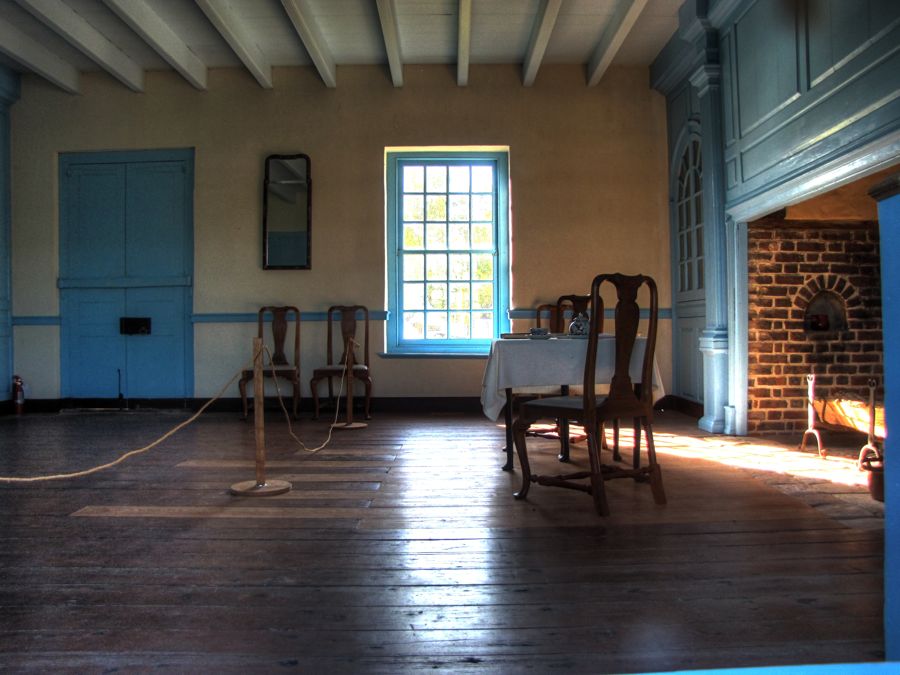
The plantation was hosting a beer festival on the day of my visit—a coincidence, honest!—and this Harley was the centerpiece of a charity drawing. Gotta love that paint.

My next stop was downtown Salisbury, MD, founded in 1732 by—yep—Isaac Handy. Virtually all of the original historic city was destroyed in 1886, almost exactly 125 years prior to my visit, by a fire that took 17 hours to get under control. Firefighters and equipment were brought to Salisbury by special trains from Crisfield and Pocomoke City, Maryland and Wilmington, Delaware to help the effort. The town hall shown here in the background was one of the few original buildings that was saved.

"Newtown" grew out of the ashes of the Salisbury fire and featured a number of large churches, perhaps in the hopes of preventing any further such tragedies. The "Old Red Meeting House" originally stood on this site and was replaced by a wood frame church in 1856. Only 7 months after the fire, it was replaced by the current structure, which became the Faith Community Church in the 1950s.

Salisbury is also home to Salisbury University, once a small teachers' college and now a sprawling accredited university. Holloway Hall was the first—and only—building from 1925-1950, and it encompassed dormitory rooms, classrooms, faculty and other offices, a cafeteria, and the gym.

These days, the university has dozens of buildings—and its students appear to have good taste in transportation. As best I could tell, this is a custom bike built around a Honda Goldwing platform.

Continuing on toward Crisfield, I happened upon the once-proud St. Paul's M.E. Church in Westover. Although in poor repair these days, it retains its original appearance and configuration. It was built in 1883 and acquired many additional members when the Curtis Chapel burned in the late 1880s. By the mid-1960s, however, it had fallen into disuse.

Note how this vine is growing outside of the church, but has crept in behind the siding and this window.

I couldn't see into the church, but here's a photo of the interior, courtesy of the Maryland Historic Trust.

Jane's Island State Park offered the opportunity for a snack and, uh, comfort stop. It had nice-looking camping facilities and a small marina with access to Tangier Sound in the Chesapeake Bay.


I'd heard of Crisfield but had never been there. At one time (1904 to be specific), Crisfield had the second-largest population of any Maryland city. Although it's still known as "The Seafood Capital of the World," only about 2,700 people currently live there. Its life as a fishing village began in 1663, and, in its heyday, it produced tons of oysters that were shipped all over the U.S. To access Crisfield's shellfish industry, the famed Pennsylvania Railroad built the Eastern Shore Railroad, which led right into town. The downtown area is actually built upon millions of oyster shells that were used to fill in the marshes and allow expansion further away from the soot of the steam engines.
This classic Beaux-Arts building was once the Bank of Crisfield. It's now for rent, in case you're interested…

Crisfield is making something of a comeback as a tourist and vacation site. It still has many beautiful houses.

And the largest Baptist church I have ever seen. The First Baptist Church of Crisfield (or "Baptist Temple" as it's known locally) was built in 1921 and is still in active use. Along with its striking neoclassical lines, the temple features an octagonal dome. The Maryland Historic Trust provided the photo of its construction.


As usual, I managed to park unobtrusively behind the church. Did I mention what a beautiful day it was?

Oh, and the Baptist Temple was not dive-bombed, just in case you were wondering. That happened at the Marion Station Baptist Church, half an hour later.
But first, on the way to Marion Station, I discovered St. Peter's Church, which has been in active use since its construction in 1850. It was remodeled in 1901 but has remained unchanged since then, successfully avoiding the embarrassment of vinyl siding, clumsy additions, or other alterations.


And then I came to Marion Station, once a prosperous strawberry-farming town on the Eastern Shore Railroad. In its prime, Marion Station was the largest producer of strawberries in the world. Now it is nearly deserted, with all of its large buildings abandoned. As I passed through the town, I assumed this had been the railroad station. In retrospect, I was wrong (and I have no idea what this building was, although it sits right on the railroad right-of-way).

Just up the road, I had to stop again, of course, for a picture of this abandoned church. It proved to be the Marion Baptist Church, built in 1925 for a congregation that began in 1898.

As I set up the photograph, I became aware of an approaching sound, loud, like a single-engined airplane. But there was nothing in sight, in any direction. The sound continued to grow, and I even looked directly overhead, thinking that there had to be a plane somewhere. Nothing. Then, without warning, a bright yellow biplane shot out from behind the side of the church, at roughly 10 feet off the ground! I was so startled, I completely failed to get a photo of it, the trusty Canon hanging useless in my hand as I gaped at the plane.
The biplane climbed steeply, clearing the telephone lines bordering the road and flying off into the distance. While I was kicking myself for having missed a cover-of-Life-quality photo, the engine sound began to return… Within moments, it was flying back straight towards me! With visions of Cary Grant and "North by Northwest" in my mind, the plane passed overhead and disappeared behind the church.
The next time, I was ready. I quickly moved over to the side of the church and prepared to capture the aerial adventure in the act. Sure enough, here it came…

As the plane approached, however, I again lost sight of it behind the abandoned church. Was the pilot planning on a spectacular final stunt, ending in a Hollywood-style crash, explosion, and flying debris? I hoped not—but I was ready! At the last second, he pulled the biplane into a steep climb and appeared directly over the top of the church.

And he came back again! Each time, he would fly the plane behind the church, out of my sight, and then suddenly appear over the church, the nearby woods, or some other spot, leaving me without a chance to set up a decent photograph. On his return trips, however, he would fly overhead, and I managed to take a couple of close-up's. I don't know my aircraft very well, but later research revealed that this was a relatively modern Grumman G-164 "Ag Cat" cropduster. Its unusual enclosed cockpit is designed to be pressurized from the inside, preventing any noxious spray from entering. Regardless of whether this was a newish biplane or one right out of World War I, it was quite a sight.

After a longish diversion, the pilot apparently took pity on me, and he reappeared flying parallel to the road—thereby allowing me ample opportunity to line up the shot. And yes, he cleared the church cupola. By a good 5 feet or more!

Since he was not actively spraying the fields behind the church, I can only assume that he was either practicing cropdusting or was just out having a good time. I like to believe it was the latter, sort of the aeronautic version of motorcycling. Long may he impress and delight the residents of this ghost town (and any stray photographers).
By now, I was hopelessly behind schedule. Still reveling in the dive-bombing adventure, I motored on to Pocomoke City. The town is bisected by the Pocomoke River (meaning "black water"). Not having had either a world-class fishing or strawberry industry, Pocomoke City is content to go by the nickname of "The Friendliest Town on the Eastern Shore." I immediately fell in love with its sights, including this pier and tour boat on the Pocomoke River…

…the 1921 drawbridge over the river…
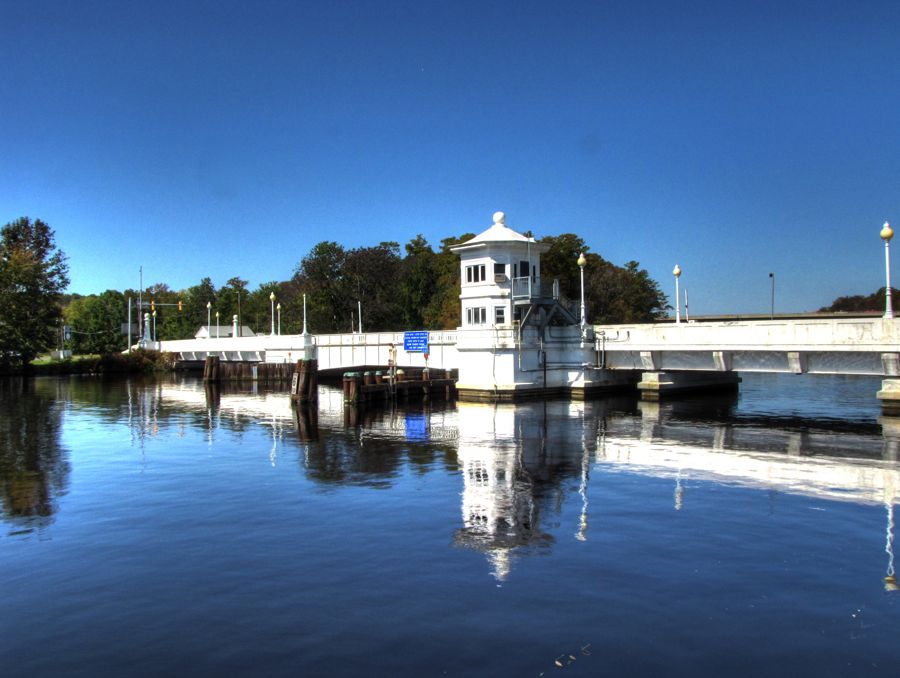
…and the downtown area. You don't often see an original MG TD (from approximately 1952) outside of a museum, let alone one serving as an active Grand Touring machine—note the luggage on the rear rack. The driver was nowhere in sight, but he'd left his proper British tweed cap hanging on the edge of the windscreen. Well done, sir!

The Isaac Costen House has graced Pocomoke City since 1870. Dr. Costen was a physician during the Civil War, when he wasn't running Union blockades on behalf of the Confederate Army. He later served in the Maryland State Legislature and as the first Mayor of Pocomoke City. His home is now a museum.

Even the unrestored houses in Pocomoke were interesting and scenic. I hated to move on.

Turning south, I crossed over into Virginia and headed for Chincoteague Island, home of the wild ponies, beaches, a major state park, and more. (In practice, the ponies live on nearby Assateague Island, which is a national park and part of Maryland.) Chincoteague was visited by Captain John Smith in 1608 and first settled in 1671. A major winter storm in 1962 managed to put the entire town under water, but it survived. (Photo courtesy of the Historic Corbin Hall website.)

On this warm, sunny October day, quite a crowd had turned out to enjoy the beach and the waves.



Okay, Jodie, what are these things? (I tentatively identified them as rare Chincoteague Unfettered Beach Posies.)

Tom's Cove was a study in approaching winter. But there were still flocks of water birds, thousands of tiny land crabs, and other denizens lurking about.
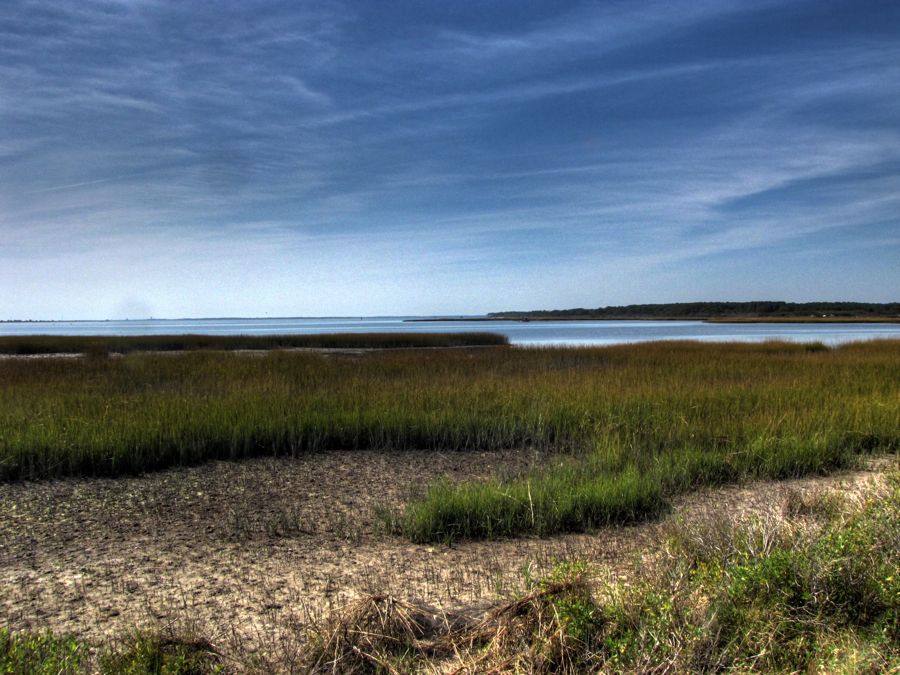
This 3-wheeled scooter variant seemed like the ideal way to get around the island—if you didn't have a BMW motorcycle or sports car.

Oh, I forgot to mention the turtles. This little freshwater pond was full of them (along with an occasional snake).

Back on the road and returning north toward Maryland, I encountered the ghost town of Horntown. Some of the houses were still occupied, but they appeared to be in the minority.


On the other hand, there must be someone around. The 1897 Horntown Baptist Church was in good repair and active service.

Proving that Maryland also has its share of abandoned places, no sooner had I crossed the state line than I ran into this house.

A windmill stood precariously behind the house. I gather that wind power pumped water up from the well into the tank, and from there gravity fed the water into the house. Gravity is currently having a different impact on the rig, I'm afraid.

The little town of Girdletree, MD had both this tiny bank (now a museum)…

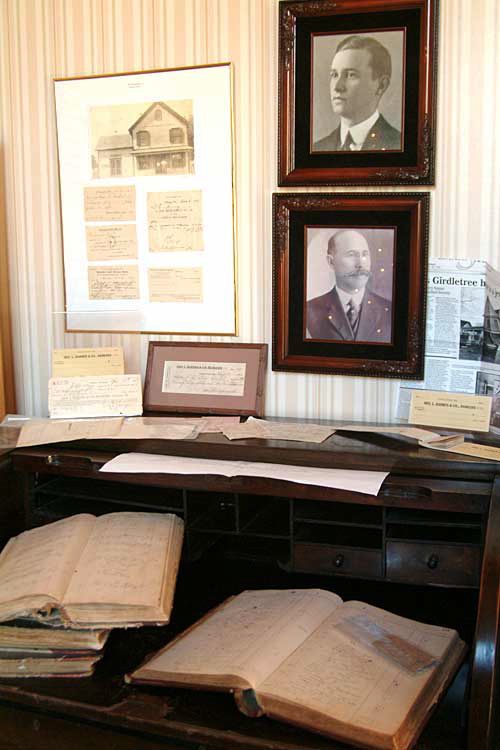
…and this ungainly church with its massive bell tower.

Abandoned farms, such as this one, became a frequent sight as I drove toward Berlin, MD.

I'd been to Berlin once before, with my Dad, visiting some of his canoe club friends. It's a beautiful little town that seems to have benefited from a nearby brickworks—virtually every building is so constructed. In the background is the Hotel Atlantic, which has served travelers and diners since 1896. It was built immediately following the devastating Berlin fire of 1895—and survived the devastating Berlin fires of 1902 and 1904. Maybe those fires had something to do with the widespread use of brick in subsequent construction.

I didn't go inside, since it was already getting late, but the hotel's website reveals that it is still doing just fine, thank you.
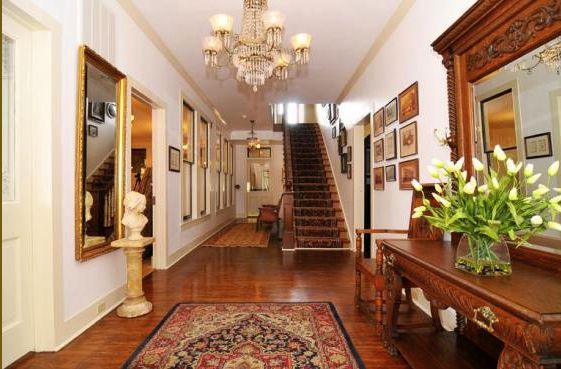
The little balcony on the hotel is still there, as in this 1920 photo from the Maryland Historical Trust, but the streets have (thankfully) since been paved. And no one was wearing black hats…


I mentioned the abandoned farms, right? This old barn will probably remain scenic for another several years, perhaps even a decade, before it becomes a pile of wood and vines. The late afternoon sun was really lighting up everything to the north and east of me as I headed for Ocean City.

It had been some years since I visited O.C., but little had changed.


In particular, Trimper's Rides & Amusements was still in place, despite financial problems associated by ever-increasing property taxes in the heart of the downtown boardwalk area. The 1902 Herschell-Spillman Carousel was going strong. (Close-up photos courtesy of Tina Miles' impressive collection at the National Carousel Association's website.)


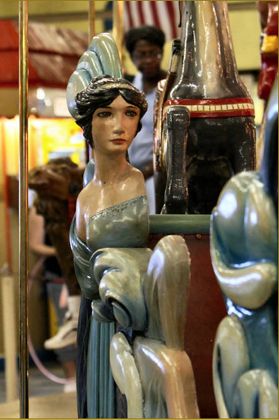

After slogging through the heavy Ocean City traffic, I eventually arrived at Fenwick Island, Delaware, just as the sun was threatening to set altogether. But it made for ideal light for the beach.




Bethany Beach and Dewey Beach were my last scheduled stops on this Atlantic Seacoast trip, but I ran out of light in Bethany.

I stood in line for some Boardwalk Fries to eat on the way home, but the line wasn't moving for some reason. A nearby Thai restaurant offered carry-out chicken dumplings (good) and, for dessert, sticky rice and mango slices (really, really good). Let's see, have you ever tried to eat sticky rice and mango slices by hand while driving a manual-transmission car at night? Well, let's just say that it worked, approximately, and made a colossal mess in the process! But a good time was had by all.
Once again, the Mad Maps folks had put together a first-rate tour. It would have been outstanding even without the biplane attack.

Rick F.


